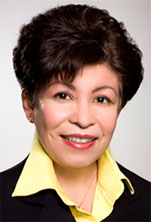 When it comes to gaining access to health insurance, Hispanics have struggled more than any other demographic in America. Roughly 30 percent of Hispanics remain uninsured compared to just 19 percent of African Americans and 11 percent of Whites. And growing demand for health care services coupled with the dwindling numbers of primary care physicians means that even with health insurance coverage, accessing health care may still present challenges for some patients.
When it comes to gaining access to health insurance, Hispanics have struggled more than any other demographic in America. Roughly 30 percent of Hispanics remain uninsured compared to just 19 percent of African Americans and 11 percent of Whites. And growing demand for health care services coupled with the dwindling numbers of primary care physicians means that even with health insurance coverage, accessing health care may still present challenges for some patients.
Last week, the National Hispanic Medical Association held our 18th Annual Conference, during which we discussed these concerns and present possible solutions. We hosted a panel titled “Best Practices for Technology to Engage Hispanic Patients” that addressed how technological innovations like telemedicine and mHealth can help provide better care for patients.
Advances in communications technologies and widespread availability of broadband services are crucial to providing medical care that best meets patient needs. Broadband-based devices and innovations allow for patient-centered in-home care and monitoring of certain chronic conditions. Additionally, telemedicine offers opportunities for medical professionals to share electronic records and diagnostic images, regardless of location. Health care information technologies can benefit everyone, allowing efficient coordination of care, cost-effective health care services, and improved communication between patient and doctor.
Technology also offers crucial opportunities for patients to take charge of their health, by learning about specific health conditions, and improving wellness with online resources or mobile tools. Increasing convenience of care is a key issue for many patients, and technology can help achieve this while also helping patients become better informed and take a more active role in improving their health. Technology can also facilitate stronger relationships between doctors and patients, facilitating communication and cooperation to meet health and wellness goals.
For many Hispanics, financial as well as cultural and language barriers prevent them from attaining quality healthcare. Here, too, technological advances offer easier, more convenient and cost-effective solutions for patients, their families, and health care providers. For example, various applications and devices are available to translate languages or to facilitate understanding of different cultures and their impact on health care. The availability of advanced communications technologies can also help providers and their personnel coordinate with social services or organizations that focus on helping specific populations, as needed
In the coming years, there will undoubtedly be even more opportunities available for patients from minority communities and their doctors to work together and achieve better health outcomes. Increasing access to broadband connectivity – both wired and wireless, is a critical health care goal. The benefits of health care technologies are too vital for Hispanics and doctors alike, and we must support efforts that focus on reducing barriers both to health care and to health care technologies.
Dr. Elena Rios is President & CEO of the National Hispanic Medical Association
This piece originally appeared in a NHMA blog

Recent Comments